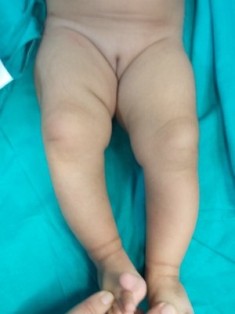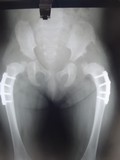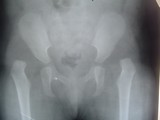Dislocation of Hip
Understanding Hip Dislocation in Children: Causes, Symptoms, and Treatment.
Welcome to our comprehensive guide on hip dislocation in children, brought to you by Dr. Sameer Desai, a renowned pediatric orthopedic surgeon based in Pune. Here, we’ ll explore the key aspects of hip dislocation, including its causes, symptoms, and available treatment options.
What is Hip Dislocation?
Hip dislocation refers to the displacement of the thighbone (femur) from its normal position within the hip socket (acetabulum). This condition can occur due to various factors and can affect individuals of all ages, including children.
Causes of Hip Dislocation in Children:
Congenital Dislocation: Some infants are born with a hip joint that is prone to dislocation due to abnormal development. This condition is known as congenital hip dislocation or developmental dysplasia of the hip (DDH).
Traumatic Dislocation: Children can experience hip dislocation as a result of accidents, falls, or direct blows to the hip region. This type of dislocation is more common in older children who are engaged in active sports or outdoor activities.
Symptoms of Hip Dislocation:
The symptoms of hip dislocation in children may vary depending on the cause and severity of the condition. Common signs include:
● Pain: Children may experience significant pain in the hip area.
● Limited Movement: The affected hip may have limited range of motion or may be completely immobile.
● Abnormal Leg Length: One leg may appear shorter than the other due to the dislocated hip.
● Visible Deformity: In some cases, there might be a visible deformity or
misalignment of the hip joint.
If your child is experiencing any of these symptoms, it’s s crucial to seek immediate medical attention from a qualified orthopedic specialist.
Treatment Options:
The treatment approach for hip dislocation in children depends on factors such as the cause, age of the child, and severity of the condition. Dr. Sameer Desai, a distinguished pediatric orthopedic surgeon in Pune, specializes in providing personalized care for young patients.
Treatment options may include:
Non-Surgical Methods: For mild cases or cases diagnosed early, non-surgical methods like the use of splints or braces might be recommended to encourage proper hip joint development.
Closed Reduction: In cases of traumatic dislocation, the orthopedic surgeon may perform a closed reduction, wherein the dislocated hip is gently maneuvered back into its correct position without the need for surgery.
Surgical Intervention: In more complex cases or instances where non-surgical methods are ineffective, surgical intervention may be necessary. Surgical procedures can involve repairing damaged structures, realigning the hip joint, or addressing underlying conditions.
Dr. Sameer Desai, with his extensive experience and expertise in pediatric orthopedics, ensures that each child receives the most suitable and compassionate care tailored to their specific needs.
Conclusion:
Hip dislocation in children requires prompt diagnosis and appropriate treatment to ensure the best possible outcomes. If you suspect your child may have a hip dislocation, don’t hesitate to consult Dr. Sameer Desai, a dedicated pediatric orthopedic surgeon in Pune, who is committed to restoring your Childs’s mobility and quality of life. Contact us today to schedule a consultation and take the first step towards your child’s healthier and happier future.





